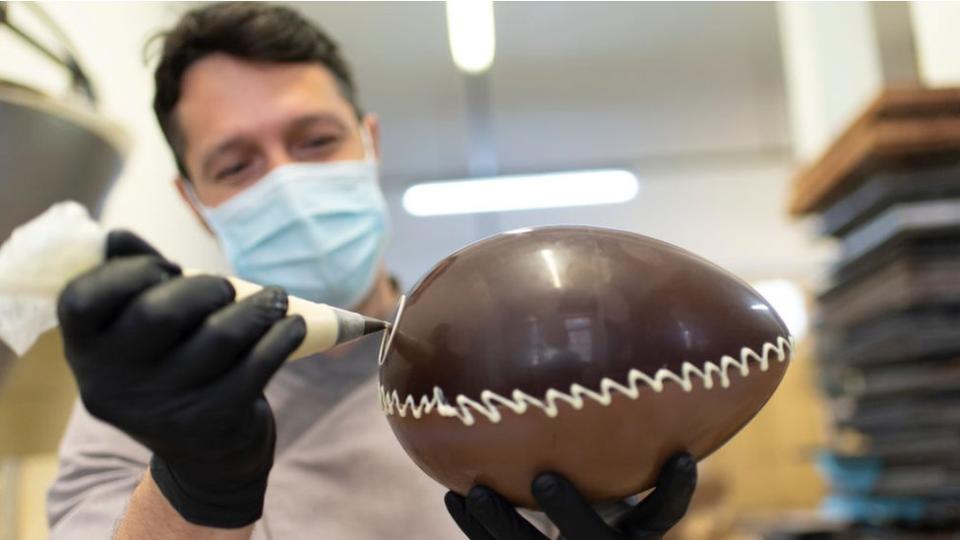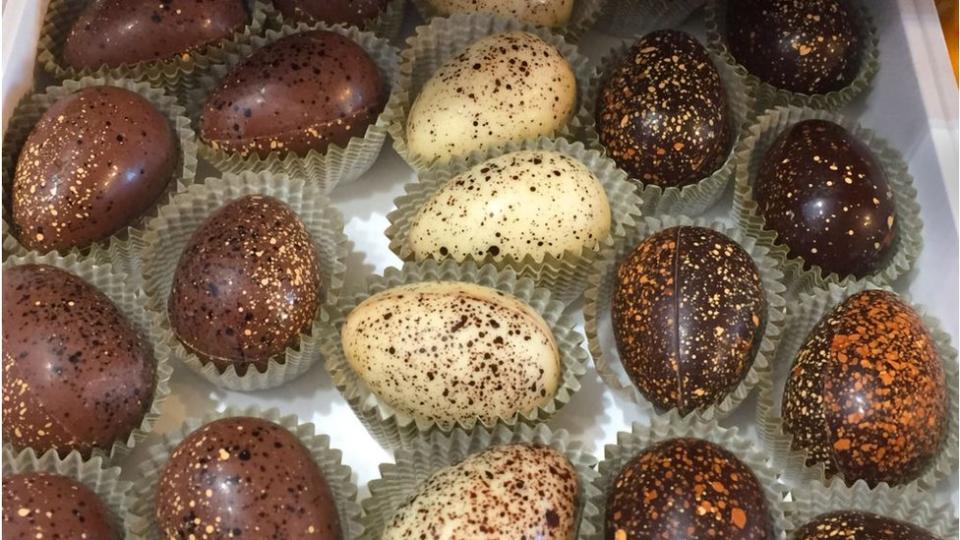Most chocolate is made from cocoa grown in West Africa, but a humid heatwave has blasted the crops and massively cut yields.
Experts say that human induced climate change has made the extreme heat 10 times more likely.
The resulting shortage of cocoa has seen prices soar to almost $8,500 (£6,700) a tonne this week.
Cocoa trees are particularly vulnerable to changes in the climate. They only grow in a narrow band of about 20 degrees latitude around the Equator.
Most global production is concentrated in West Africa. In 2023, 58m kilogrammes of cocoa beans worth £127m were imported to the UK from Ivory Coast and Ghana with 85% of the UK’s cocoa beans sourced from Ivory Coast.
However, severe drought conditions have hit the West Africa region since February this year.
This has been caused by temperatures that soared above 40C, breaking records in countries including the Ivory Coast and Ghana.

It was these exceptionally high temperatures that the World Weather Attribution group, based at Imperial College London, found were made ten times more likely by human-caused greenhouse gas emissions.
Their study found that unless the world quickly reduces fossil fuel use, West Africa will experience similar heatwaves about every two years.
“There were reports from farmers in Ivory Coast that the heat weakened the cocoa crop,” according to one of the authors of the study, Izadine Pinto from the University of Cape Town.
He said the high temperatures increased the rate of evaporation, leaving the crops without sufficient moisture.
Another factor impacting the crops was El Niño.
This is a recurring, natural fluctuation in weather patterns in the tropical Pacific that drives up global temperatures and can lead to extreme weather in some places. A strong El Niño has been active since last June.
El Niño years often present challenges for farmers, but global warming is exacerbating those changes, says Ben Clarke, an expert on extreme weather at the Grantham Institute at Imperial College.
“Increasingly, climate change driven by fossil fuel use is multiplying this natural challenge in many regions. It fuels more extreme conditions, devastates harvests, and makes food costs higher for all,” Mr Clarke said.
Drought is not the only factor affecting cocoa growers. Both Ivory Coast and Ghana have been hit with an extreme weather double whammy.
In December last year both countries experienced intense rains. Total precipitation in West Africa was more than double the 30-year average for the time of year.
The wet and humid conditions allowed a fungal infection called black pod disease to flourish, rotting cocoa beans on the trees.
The result of these different extreme events has been the same – the price of cocoa has more than trebled since this time last year and doubled in just the last three months.
Chocolate makers typically buy beans months ahead of time but soaring prices are now beginning to affect prices in the shops.
“Lots of players who have already announced price increases. We are also part of that group,” Martin Hug, of chocolate maker Lindt & Spruengli told city analysts earlier this month.


In February Mondelez, the company that owns the Cadbury brand, and the American chocolate maker Hershey were already warning rising cocoa prices could drive up the price of chocolate.
Feeling the brunt of these price fluctuations are the farmers who grow the cocoa crops.
There are estimated to be some two million smallholder farmers in the West African cocoa belt who rely on this labour-intensive crop for most of their income.
Amber Sawyer, an analyst at the climate think-tank the Energy and Climate Intelligence Unit, said wealthy countries like the UK can provide financial and technical support to developing countries to help their farmers better cope with extreme weather.
But she warned that, “as climate change worsens, more support will undoubtedly be needed to protect their livelihoods and keep the flow of cocoa beans coming into the UK.”
